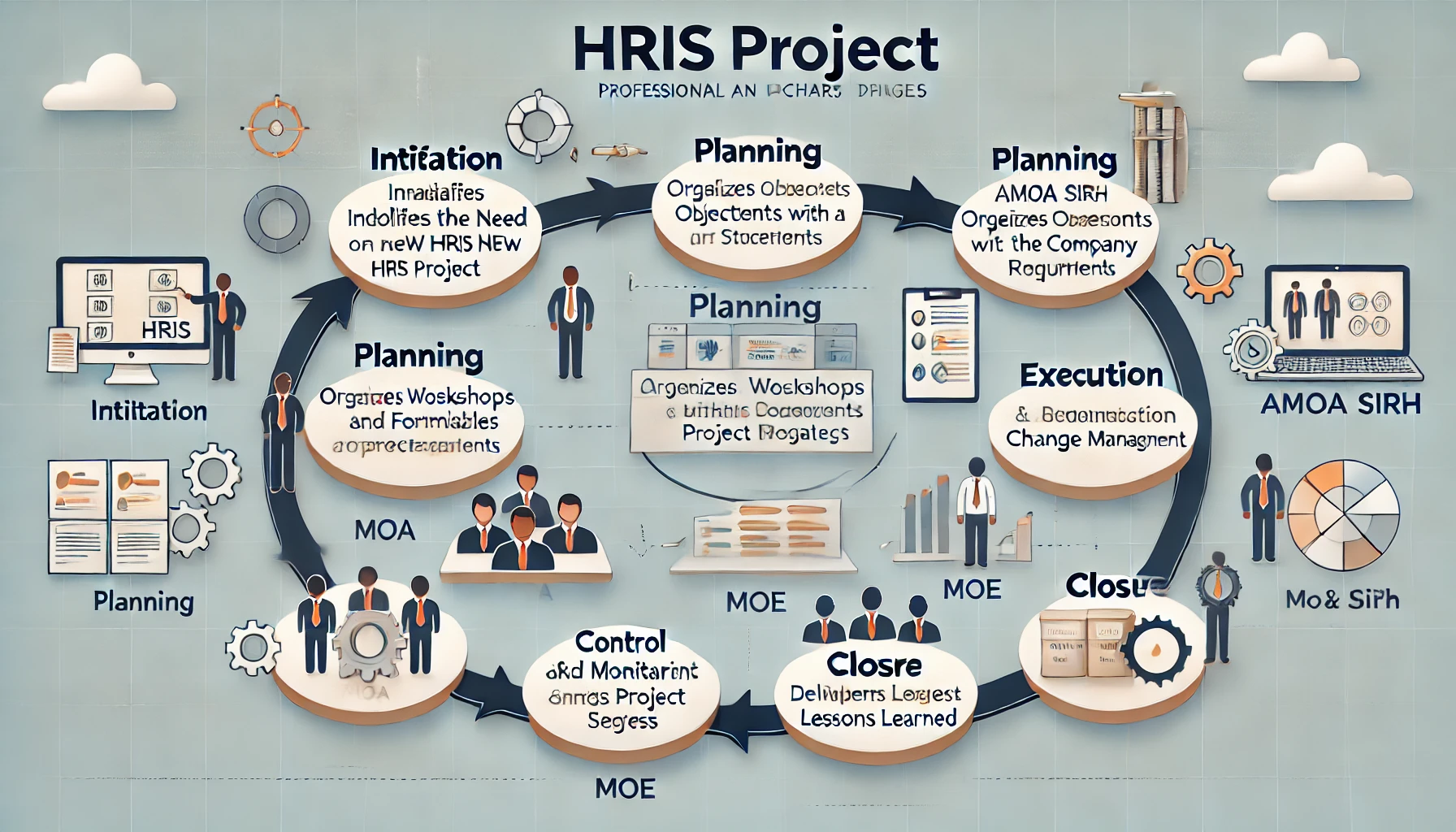


In the dynamic world of human resources and information technology, the implementation or evolution of a Human Resources Information System (HRIS) is a major challenge for organizations seeking to optimize the management of their human capital. The success of these complex projects depends on effective coordination between business needs and technological solutions. In Europe, the role of Project Management Assistance (AMOA) is central to ensuring this synergy. However, this term is less well-known in North America, particularly in Quebec, where responsibilities are often distributed differently.
In this edition of HROps Insights, we explore the essential role of AMOA HRIS, how it differs from the roles of Business Analysts and Functional Analysts, and how it fits into project management according to PMI PMBOK standards. We will also cover the concepts of MOA, AMOA, MOE, and AMOE, illustrating their respective roles in an HRIS project.
Origin of the AMOA Term and Its Adoption
The term Project Management Assistance (AMOA)
originated in Europe, where it refers to an entity that supports the Project Owner (MOA)—the project
sponsor, typically the business unit. The AMOA ensures that the MOA’s needs are properly understood,
translated into functional requirements, and that the project stays aligned with the organization's
strategic objectives.
In North America, and particularly in Quebec, the role of AMOA is less widespread under this name. The responsibilities associated with AMOA are often assumed by Business Analysts, Project Managers, or Project Management Office (PMO) teams. This difference in terminology can sometimes lead to underestimating the importance of this specific role in the success of HRIS projects.
Key Concepts: MOA, AMOA, MOE, and AMOE
Before going further, let’s clarify the
following roles:
- Project Owner (MOA): The project sponsor, typically the Human
Resources Department for an HRIS project. The MOA defines the needs, strategic objectives, and ensures that
the project meets the organization’s expectations.
- Project Management Assistance
(AMOA): Supports the MOA in managing needs, drafting specifications, validating deliverables, and
managing change. AMOA has both business and technical expertise, facilitating communication between the MOA
and technical teams.
- Project Execution (MOE): Responsible for the technical execution
of the project. MOE implements the technological solutions to meet the requirements defined by the MOA.
-
Project Execution Assistance (AMOE): Provides specialized technical support to MOE,
particularly on complex or specific aspects of the project.
, AMOA (Project Management Assistance), MOE (Project Execution).webp)
AMOA HRIS: Essential Dual Expertise
AMOA HRIS has dual expertise:
1. HR Business
Expertise: In-depth knowledge of HR processes such as payroll, talent management, training, and labor
law.
2. IT Technical Competence: Understanding of information technologies, HRIS architectures,
databases, and software solutions.
This dual expertise allows AMOA HRIS to understand the strategic
challenges of the HR Department while effectively communicating with technical teams. It serves as a
privileged interface, facilitating communication and ensuring that the implemented solutions meet the
expressed needs.
![]()
Distinction with the Business Analyst and Functional Analyst
While the roles of AMOA
HRIS, Business Analyst, and Functional Analyst share similar skills, they differ significantly in focus,
competencies, and interactions.

An Example of an HRIS Project in Quebec
Context: A Quebec-based company wants to
implement a new HRIS to improve talent management and optimize HR processes.
Phase 1: Project
Initiation
- MOA (HR Department): Identifies the need for a new HRIS to address strategic
challenges.
- AMOA HRIS: Helps define the project’s objectives in alignment with the company’s
strategy.

The Benefits of AMOA HRIS in the North American Context

Conclusion
